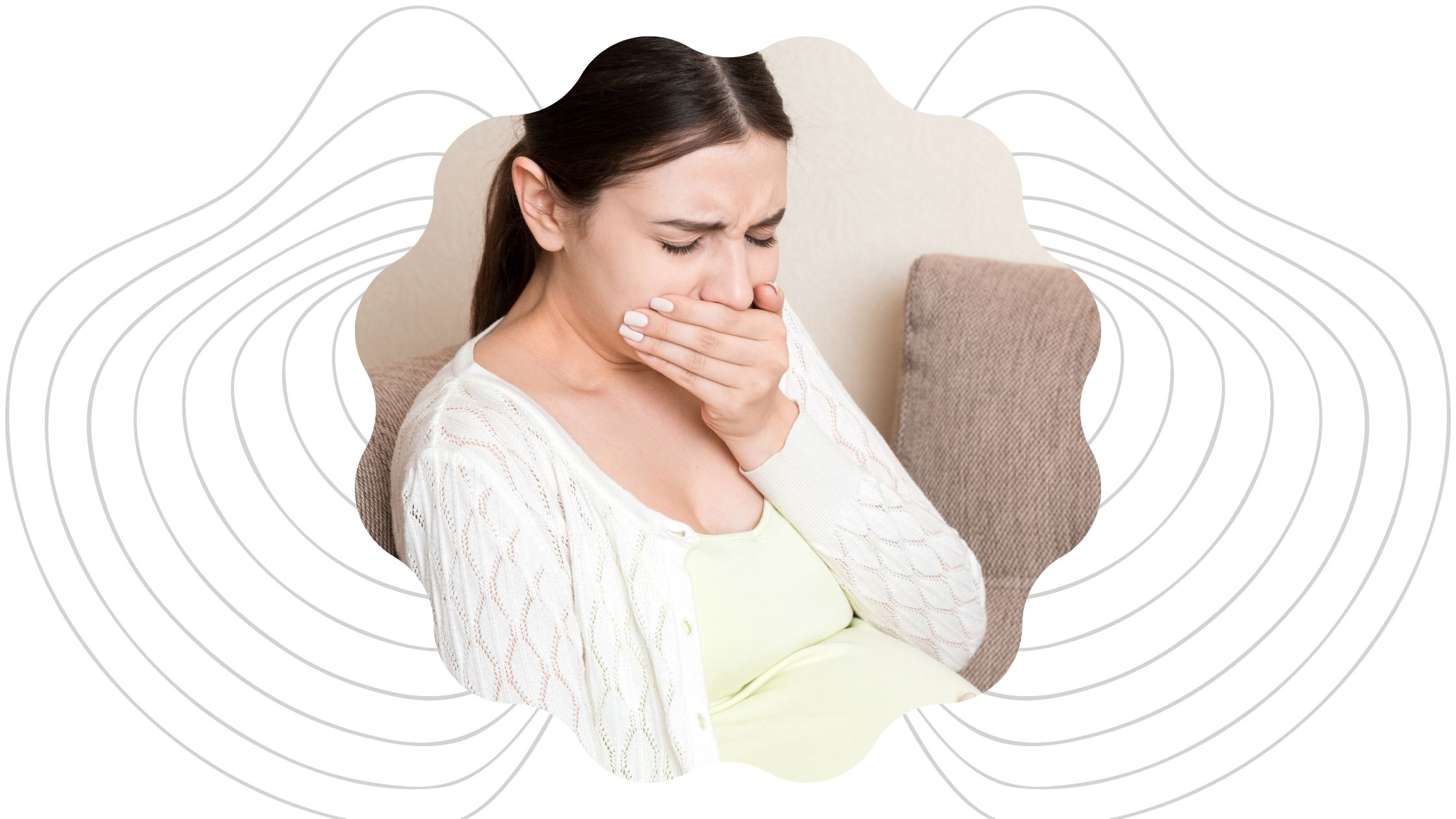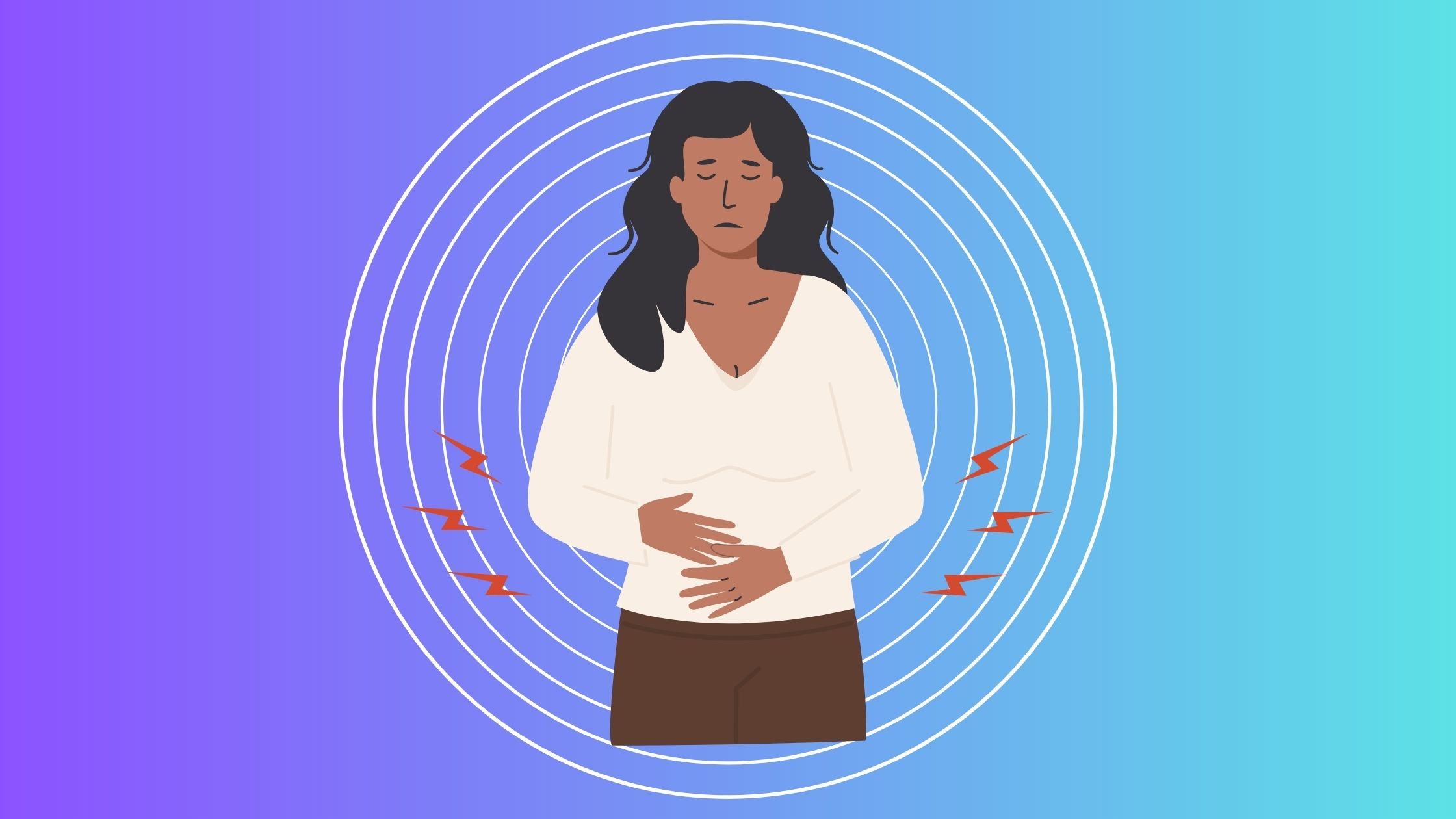When you’re trying to conceive (TTC), the wait after ovulation feels like forever, right?
At 3 days past ovulation (or 3 DPO for short), you’re probably wondering, “Am I pregnant or not?” Well, it’s still early in the process, and hormonal fluctuations are common at this stage, irrespective of pregnancy.
You may be familiar with the term “two-week wait” (TWW). By 3 DPO, it feels like the finish line is ages away. But, can you even spot any early pregnancy signs?
Well, the only way to be sure is to take a pregnancy test. But you’ve got to wait and take it a week after your missed period for the best results.
In the meantime, you might be overthinking every little twinge or cramp, wondering if it’s an early pregnancy symptom or just your period gearing up.
So, if you’re at 3 days past ovulation and feeling all the feels, you’re not alone. Let’s explore all the signs, symptoms and what to expect at 3 DPO.
Can You Feel Pregnancy Symptoms 3 DPO?

No, it’s highly unlikely for a woman to feel pregnancy symptoms 3 days past ovulation.
This is because the fertilized egg typically takes about 6 to 12 DPO to travel the fallopian tube and implant into the uterine lining. 3 DPO is usually too soon for implantation to have occurred.
Only after implantation does the body produce the hormone hCG (human chorionic gonadotropin), responsible for most early pregnancy symptoms.
If you’re TTC, you might eagerly look for early signs of pregnancy just 3 days past ovulation. It’s natural to be hyper-attuned to every sensation in your body during this time.
Remember, it’s possible to be pregnant and not experience any symptoms until several weeks into the pregnancy. Everyone’s journey is unique.
Even if you don’t notice pregnancy symptoms 3 days after ovulation, it’s a good idea to be prepared for any changes that might come your way.
What is Happening to Your Body 3 DPO?
At 3 days past ovulation, you’re still early in the luteal phase.
The luteal phase begins with ovulation until your period starts or a fertilized egg anchors itself in the uterine lining.
By 3 DPO, a mature egg has been released from the ovary and travels through the fallopian tube.
Typically, an egg remains in the fallopian tube for about 12–24 hours post-release, waiting to be fertilized. This brief period is the prime window for fertilization.
Given that sperm can survive within the reproductive tract for up to 5 days post-intercourse, you might already be pregnant if you engaged in intercourse during your fertility window.
Even if fertilization occurred soon after ovulation, implantation likely hasn’t happened at 3 DPO.
During the Luteal phase, hormonal shifts pave the way for a potential pregnancy. Progesterone levels rise post-ovulation, peaking around 6 to 8 DPO.
Progesterone is behind the physical and emotional changes you might experience 3 days past ovulation.
If an egg gets implanted during this phase, your body’s preparations for pregnancy intensify.
If you’re at 3 DPO without any noticeable changes, stay calm! You might be pregnant, but your body hasn’t recognized it yet. By this stage, counting from your last menstrual period, you’d be approximately 2–3 weeks pregnant.
Early Pregnancy Symptoms at 3 DPO
At 3 days past ovulation, your body changes due to fluctuating hormone levels. These signs often resemble premenstrual syndrome (PMS) symptoms and the initial stages of pregnancy.
This overlap, primarily due to hormonal changes, notably the surge in progesterone, can make it difficult to determine whether you’ve conceived or your period is approaching.
Common 3 DPO symptoms women report at this stage include:
1. Fatigue

Tiredness is frequently one of the early pregnancy symptoms. Yet, it’s common for women to feel it during their menstrual periods.
Recent research indicates that those with elevated luteal progesterone have reduced irritability and tiredness throughout their cycle. But it’s wise to consult your doctor if you’re constantly exhausted, irrespective of your cycle’s phase or potential pregnancy.
In certain situations, ongoing tiredness might indicate another health issue, like hypothyroidism (diminished thyroid activity) or anemia (reduced hemoglobin and red blood cells).
2. Headache and Backaches

Got that nagging back pain right around your period? Many women experience back discomfort around the time of their menstrual cycle, often intensifying just before it starts.
It’s a mixed bag; some get it bad, while others do not so much.
But here’s the silver lining: once the period kicks in, it’s like a weight’s been lifted for many. This pain (dysmenorrhea) is mainly due to the contraction of the uterus’s smooth muscles, influenced by hormonal and prostaglandin fluctuations. Such discomfort might also hint at early pregnancy.
Many women report headaches and backaches as the menstrual cycle approaches, especially during the early luteal phase. However, these symptoms don’t always mean you’re pregnant.
If you’ve encountered back discomfort during a previous pregnancy, there’s a possibility it might recur. Typically, such backaches are caused by the fetus pressing against the spine. But feeling it at 3 DPO? That’s jumping the gun a bit.
Here’s a pro tip: Chugging down more water in the luteal phase might keep the pain at bay. Got a headache or backache? Drink up! If that doesn’t help, anti-inflammatory medications can relieve menstrual discomfort.
Backaches during the early days of pregnancy can be more pronounced if you’ve had prior back problems or are overweight. However, at 3 DPO, whether the backache stems from hormonal changes during the luteal phase or is, an early sign of pregnancy remains uncertain. Who’s to say?
3. Bloating
Around the midpoint of a woman’s cycle, ovulation kicks in, and suddenly, you might feel quite bloated.
And this sensation tends to linger up to 3 DPO. A notable hormone surge can throw off your fluid balance just before ovulation occurs.
Increasing progesterone during the luteal phase can slow things down in your digestive system, leading to bloating and, occasionally, constipation.
Not jumping to conclusions is essential; these symptoms don’t automatically signal pregnancy.
Interestingly, during pregnancy, this very hormone can disrupt your digestion further. And when the egg is released, it introduces a small amount of fluid into your internal organs, particularly the intestines, exacerbating the bloating.
4. Nausea

Feeling queasy? Well, that’s often the body’s way of waving the early pregnancy flag.
If you’re on the baby-making journey and feel a bit green around the gills at 3 DPO, jot that down. Everyone’s heard of the infamous ‘morning sickness,’ right? So, if you’re hugging the toilet or just feeling off, it’s easy to think, “Baby on board!” But hold up! That tummy turmoil could be PMS playing tricks on you.
5. Cramping
Ever had that nagging pain in your belly around ovulation? You’re not alone. About 40% of women feel the pinch, and while it usually fades fast, you might still feel some twinges at 3 DPO.
There are many reasons you could be cramping. For instance, PCOS (Polycystic Ovary Syndrome) can make menstrual cycles uncomfortable. Are you undergoing IVF? The medications might also be a source of abdominal discomfort.
However, at 3 DPO, the culprit might be progesterone, which is doing its thing in the luteal phase.
But a cramp here and there doesn’t necessarily mean there’s a baby on the way.
You might wonder then, “Do these cramps signify pregnancy? Or the opposite?”
Cramps can be unsettling for many but can also be a standard part of the cycle.
Hormonal changes like elevated progesterone levels in the early stages of pregnancy can cause various abdominal symptoms, including bloating, gas, and cramps. And while it’s less common, these symptoms could be due to implantation.
However, cramps at 3 DPO are somewhat unusual. Implantation typically occurs between 6 to 12 DPO. So, if it feels like your period has arrived prematurely, it’s easy to be confused. Observing a brownish discharge or implantation bleeding 10 to 14 DPO is possible.
Distinguishing between an early period and implantation can be challenging due to the overlapping symptoms of bleeding and cramping. Hence, monitoring for other signs of conception is recommended to differentiate between the two.
6. Breast Pain and Tenderness

Got sore boobs? It’s a common gripe, and the culprits are many – from chugging too much coffee to that pesky bra that doesn’t quite fit right to the rollercoaster of hormones during your monthly cycle or early pregnancy.
For some, the breast tenderness often kicks in around ovulation and hangs around till your next period. A quick fix for breast tenderness? Maybe cut back on the caffeine intake and let the girls breathe in comfy clothing.
The science behind the soreness is still a mystery. Some researchers believe it’s a game of hormonal tug-of-war between estrogen and progesterone during the latter half of the cycle. Others point to the hormone prolactin as the leading cause.
By 3 DPO, if your breasts feel like they’re staging a protest and your nipples are super sensitive, it could be an early heads-up from the stork. But remember, there’s a whole list of reasons for breast tenderness, from your monthly cycle to that extra cup of joe. So, take it easy, and maybe talk to your doctor if you’re concerned.
7. Spotting
Ever spotted a bit of blood between your periods and thought you were pregnant? Well, hold on a bit!
If you’re keeping a close eye on your ovulation, the chances of it being implantation this early are slim. You may have ovulated earlier than you considered, and now, by some twist, implantation’s happening around day 5 or 6 DPO.
But here’s the deal: a bit of spotting sometimes means something other than a bun in the oven. Implantation bleeding usually rolls around a bit later than 3 DPO, often just a few days shy of your next period.
Can Implantation Happen 3 DPO?
As discussed, 3 days after ovulation is a bit early to consider implantation.
Even if implantation’s still on the horizon, a lot of action is going on.
Typically, implantation happens between 6 and 12 DPO. And when it does, your body produces a hormone called hCG (human Chorionic Gonadotropin).
This hormone has a big job – it tells your body to keep churning progesterone, which helps your uterus grow and keeps those contractions at bay until showtime.
But wait, there’s more! hCG helps to detect pregnancy. You need hCG levels north of 25 mIU/mL on the pregnancy test to see that big fat-positive result. So, at 3 DPO, you might be jumping the gun a bit. If there’s a fertilized egg in the picture, it’s probably still en route to the uterus.
If you’ve got the patience, waiting until you’ve missed a period might be the way to go. But if you’re itching to take a test earlier, go for it!
Cramping 3 DPO

Feeling a pinch at 3 days past ovulation and thinking it’s a baby on board? Hold up!
Even though 3 DPO might be jumping the gun for implantation, the big moment could be just around the corner.
Typically, a fertilized egg implants in the uterus around 6–10 DPO. Any cramps you’re feeling might come with a side of light spotting.
If you’re getting these vibes, it’s probably just your body preparing for its menstrual cycle. But if this feeling is new or lasts longer than usual, it could be a baby hint.
Most doctors would tell you to wait until you’ve missed a day or two of your period before taking a test. If you are pregnant, the test can pick up on those tell-tale hormones.
Is 3 DPO Too Early for a Positive Pregnancy Test?
Thinking of taking a pregnancy test at 3 days past ovulation?
At 3 days past ovulation, your hCG levels (the pregnancy hormone) are still playing hide and seek. So, even if you’re pregnant, the test might not spot it.
Timing is everything with pregnancy tests. If you test too late, you might overlook the signs of pregnancy, potentially leading to decisions that aren’t ideal, such as neglecting prenatal vitamins or continuing habits like drinking or smoking.
Conversely, testing too soon might yield false-negative or false-positive outcomes.
The hCG surge causes many early pregnancy symptoms and delivers a positive pregnancy test result. Waiting till 14 DPO, or the day you expect your menstrual cycle, is ideal for the most accurate results. If patience isn’t your strong suit, you could see your doctor for a blood test as early as 8 days post-ovulation.
Takeaway
- 3 DPO is premature for pregnancy confirmation; implantation hasn’t occurred.
- By 3 DPO, an ovum might be fertilized in the fallopian tubes.
- 3 DPO symptoms, such as cramping and nausea, can be due to hormonal changes, not necessarily pregnancy.
- Earliest pregnancy signs usually appear between 8-10 DPO, aligning with implantation.
- Monitoring menstrual and ovulation cycles can provide more precise insights.
- Fertilized eggs start their journey to the uterus for implantation around 3 DPO.
- Implantation generally occurs between 6-12 DPO.
- The hCG hormone, produced during implantation, is a pregnancy test marker.
- Symptoms like bloating and fatigue at 3 DPO can also result from other causes.
- Pregnancy tests at 3 DPO aren’t advised; results are more accurate post-missed period.
References
Wilcox AJ, Baird DD, Weinberg CR. Time of implantation of the conceptus and loss of pregnancy. N Engl J Med. 1999 Jun 10;340(23):1796-9. doi: 10.1056/NEJM199906103402304. PMID: 10362823.Norwitz ER, Schust DJ, Fisher SJ. Implantation and the survival of early pregnancy. N Engl J Med. 2001 Nov 8;345(19):1400-8. doi: 10.1056/NEJMra000763. PMID: 11794174.Nepomnaschy PA, Welch KB, McConnell DS, Low BS, Strassmann BI, England BG. Cortisol levels and very early pregnancy loss in humans. Proc Natl Acad Sci U S A. 2006 Mar 7;103(10):3938-42. doi: 10.1073/pnas.0511183103. Epub 2006 Feb 22. PMID: 16495411; PMCID: PMC1533790.Baerwald AR, Adams GP, Pierson RA. A new model for ovarian follicular development during the human menstrual cycle. Fertil Steril. 2003 Jul;80(1):116-22. doi: 10.1016/s0015-0282(03)00544-2. PMID: 12849812.Dunson DB, Baird DD, Wilcox AJ, Weinberg CR. Day-specific probabilities of clinical pregnancy based on two studies with imperfect measures of ovulation. Hum Reprod. 1999 Jul;14(7):1835-9. doi: 10.1093/humrep/14.7.1835. PMID: 10402400.Filicori M, Butler JP, Crowley WF Jr. Neuroendocrine regulation of the corpus luteum in the human. Evidence for pulsatile progesterone secretion. J Clin Invest. 1984 Jun;73(6):1638-47. doi: 10.1172/JCI111370. PMID: 6427277; PMCID: PMC437074.Gartland D, Brown S, Donath S, Perlen S. Women's health in early pregnancy: findings from an Australian nulliparous cohort study. Aust N Z J Obstet Gynaecol. 2010 Oct;50(5):413-8. doi: 10.1111/j.1479-828X.2010.01204.x. PMID: 21039372.Schmidt PJ, Nieman LK, Danaceau MA, Adams LF, Rubinow DR. Differential behavioral effects of gonadal steroids in women with and in those without premenstrual syndrome. N Engl J Med. 1998 Jan 22;338(4):209-16. doi: 10.1056/NEJM199801223380401. PMID: 9435325.Garber JR, Cobin RH, Gharib H, Hennessey JV, Klein I, Mechanick JI, Pessah-Pollack R, Singer PA, Woeber KA; American Association of Clinical Endocrinologists and American Thyroid Association Taskforce on Hypothyroidism in Adults. Clinical practice guidelines for hypothyroidism in adults: cosponsored by the American Association of Clinical Endocrinologists and the American Thyroid Association. Endocr Pract. 2012 Nov-Dec;18(6):988-1028. doi: 10.4158/EP12280.GL. Erratum in: Endocr Pract. 2013 Jan-Feb;19(1):175. PMID: 23246686.Camaschella C. Iron-deficiency anemia. N Engl J Med. 2015 May 7;372(19):1832-43. doi: 10.1056/NEJMra1401038. PMID: 25946282.Chen, C., Chiang, F., Lin, J., Huang, C., Chen, Y., Hamdy, N. M., Huang, C., Chang, Y., Shieh, M., Huang, J., & Hsia, M. (2023). Effect of Vitamin D Supplementation on Primary Dysmenorrhea: A Systematic Review and Meta-Analysis of Randomized Clinical Trials. Nutrients, 15(13). https://doi.org/10.3390/nu15132830Dawood MY. Primary dysmenorrhea: advances in pathogenesis and management. Obstet Gynecol. 2006 Aug;108(2):428-41. doi: 10.1097/01.AOG.0000230214.26638.0c. PMID: 16880317.Dipietro JA, Costigan KA, Sipsma HL. Continuity in self-report measures of maternal anxiety, stress, and depressive symptoms from pregnancy through two years postpartum. J Psychosom Obstet Gynaecol. 2008 Jun;29(2):115-24. doi: 10.1080/01674820701701546. PMID: 18655259; PMCID: PMC9566577.Baker FC, Driver HS. Circadian rhythms, sleep, and the menstrual cycle. Sleep Med. 2007 Sep;8(6):613-22. doi: 10.1016/j.sleep.2006.09.011. Epub 2007 Mar 26. PMID: 17383933.Wang SM, Dezinno P, Maranets I, Berman MR, Caldwell-Andrews AA, Kain ZN. Low back pain during pregnancy: prevalence, risk factors, and outcomes. Obstet Gynecol. 2004 Jul;104(1):65-70. doi: 10.1097/01.AOG.0000129403.54061.0e. PMID: 15229002.Proctor ML, Murphy PA. Herbal and dietary therapies for primary and secondary dysmenorrhoea. Cochrane Database Syst Rev. 2001;(3):CD002124. doi: 10.1002/14651858.CD002124. Update in: Cochrane Database Syst Rev. 2016;3:CD002124. PMID: 11687013.Rossmanith WG, Ruebberdt W. What causes hot flushes? The neuroendocrine origin of vasomotor symptoms in the menopause. Gynecol Endocrinol. 2009 May;25(5):303-14. doi: 10.1080/09513590802632514. PMID: 19903037.Stachenfeld NS, Taylor HS. Progesterone increases plasma volume independent of estradiol. J Appl Physiol (1985). 2005 Jun;98(6):1991-7. doi: 10.1152/japplphysiol.00031.2005. Epub 2005 Feb 17. PMID: 15718411.Deecher DC, Dorries K. Understanding the pathophysiology of vasomotor symptoms (hot flushes and night sweats) that occur in perimenopause, menopause, and postmenopause life stages. Arch Womens Ment Health. 2007;10(6):247-57. doi: 10.1007/s00737-007-0209-5. Epub 2007 Dec 12. PMID: 18074100.Ecochard R, Gougeon A. Side of ovulation and cycle characteristics in normally fertile women. Hum Reprod. 2000 Apr;15(4):752-5. doi: 10.1093/humrep/15.4.752. PMID: 10739814.Freeman EW, Sammel MD, Liu L, Gracia CR, Nelson DB, Hollander L. Hormones and menopausal status as predictors of depression in women in transition to menopause. Arch Gen Psychiatry. 2004 Jan;61(1):62-70. doi: 10.1001/archpsyc.61.1.62. PMID: 14706945.Brott NR, Le JK. Mittelschmerz. [Updated 2023 May 1]. In: StatPearls [Internet]. Treasure Island (FL): StatPearls Publishing; 2023 Jan-. Available from: https://www.ncbi.nlm.nih.gov/books/NBK549822/Freeman ME, Kanyicska B, Lerant A, Nagy G. Prolactin: structure, function, and regulation of secretion. Physiol Rev. 2000 Oct;80(4):1523-631. doi: 10.1152/physrev.2000.80.4.1523. PMID: 11015620.E.W. Harville and others, Vaginal bleeding in very early pregnancy, Human Reproduction, Volume 18, Issue 9, September 2003, Pages 1944–1947, https://doi.org/10.1093/humrep/deg379Cole LA. New discoveries on the biology and detection of human chorionic gonadotropin. Reprod Biol Endocrinol. 2009 Jan 26;7:8. doi: 10.1186/1477-7827-7-8. PMID: 19171054; PMCID: PMC2649930.
